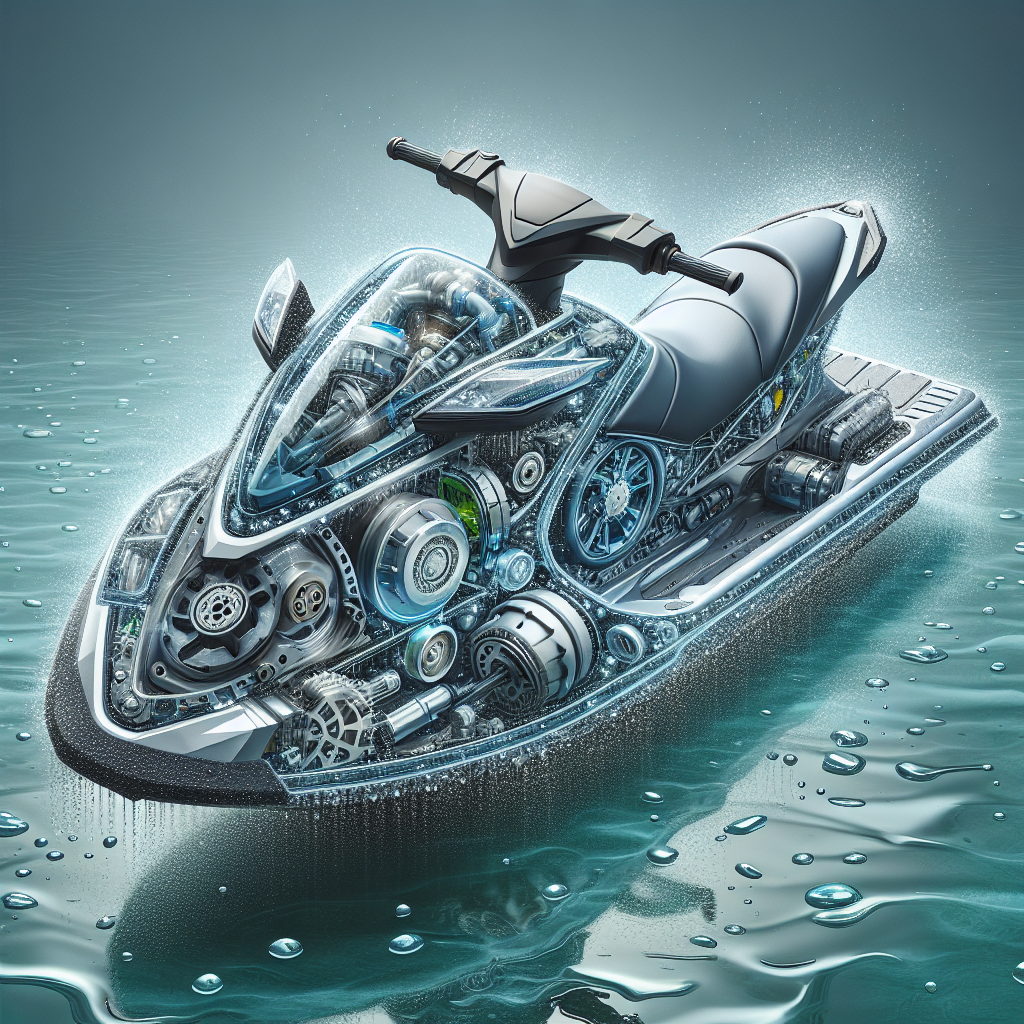Essential Regular Maintenance Checklist for Jet Skiers

Are you a passionate jet skier who wants to ensure the longevity and optimal performance of your personal watercraft? Look no further! In this article, we will provide you with an essential regular maintenance checklist specifically tailored for jet skiers like you. By following these simple yet crucial steps, you can keep your jet ski in top-notch condition and have countless hours of thrilling adventures on the water. And to make your jet skiing experience even better, we highly recommend renting your jet ski from the watersport experts at A2Z Powersport, located in Orange Beach, AL. With their expertise and top-notch service, you can have a worry-free and exhilarating time on the waves. Don’t wait any longer, start maintaining your jet ski today!
Pre-Ride Inspection
Before you hit the waves on your jet ski, it’s crucial to perform a pre-ride inspection to ensure that your watercraft is in optimal condition. Here are the key areas to check:
Fuel level
Check the fuel gauge on your jet ski to ensure that you have enough fuel for your ride. Running out of fuel in the middle of the water can quickly turn a fun day into a frustrating one.
Oil level
Inspect the oil level of your jet ski’s engine. Low oil levels can lead to engine damage, so it’s essential to maintain the proper oil level at all times.
Engine compartment
Carefully inspect the engine compartment to look for any signs of damage, leaks, or loose connections. Ensure that all parts are securely fastened and there are no loose wires or hoses.
Battery connections
Check the battery connections for any corrosion or loose terminals. Clean any buildup on the terminals and tighten them if necessary. A secure battery connection is crucial for the proper functioning of your jet ski’s electrical system.
Engine Maintenance
The engine is the heart of your jet ski, and regular maintenance is vital to keep it running smoothly. Here are the key aspects of engine maintenance:
Check spark plugs
Inspect the spark plugs for signs of wear, damage, or fouling. Replace them if necessary. Clean and properly gapped spark plugs are essential for optimal engine performance.
Inspect fuel lines and filters
Check the fuel lines for any leaks, cracks, or damage. Ensure that the fuel filters are clean and unclogged. A clogged fuel filter can hinder fuel flow, leading to engine performance issues.
Change oil and filter
Regularly change the oil and oil filter in your jet ski’s engine as recommended by the manufacturer. Fresh oil helps lubricate the engine and prolong its lifespan.
Inspect cooling system
Check the cooling system, including hoses and clamps, for any leaks or damage. Inspect the radiator for any debris and clean it if necessary. Proper cooling is vital to prevent the engine from overheating.
Check belts and hoses
Inspect the belts and hoses in your jet ski’s engine compartment. Look for signs of wear, cracking, or fraying. Replace any damaged belts or hoses to prevent unexpected breakdowns.
Electrical System
The electrical system in your jet ski is responsible for powering various components. Proper maintenance of the electrical system ensures a smooth and safe ride. Here’s what you need to do:
Inspect battery terminals
Regularly check the battery terminals for any corrosion or loose connections. Clean the terminals and apply a protective coating to prevent further corrosion.
Test horn and lights
Ensure that all the lights, including headlights, taillights, and indicators, are functioning properly. Test the horn to ensure it produces a loud and clear sound.
Check wiring connections
Inspect the wiring connections throughout your jet ski. Look for any loose or damaged wires. Properly connected and intact wiring ensures that all electrical components work as intended.
Inspect ignition system
Check the ignition system, including the ignition switch and spark plug wires, for any signs of wear or damage. A malfunctioning ignition system can prevent your jet ski from starting.
Propulsion System
The propulsion system of your jet ski is responsible for generating power and propelling you through the water. Regular maintenance of the propulsion system ensures a thrilling and safe ride. Here’s what you need to do:
Inspect impeller for damage
Carefully inspect the impeller, located within the pump housing, for any signs of damage or wear. A damaged impeller can lead to decreased performance and efficiency.
Check jet pump and nozzle
Inspect the jet pump and nozzle for any debris or obstruction. Clear any debris that may hinder the proper functioning of the propulsion system.
Monitor intake grate for debris
Regularly check the intake grate for any debris, such as seaweed or rocks, that may have been sucked in. A clogged intake grate can lead to overheating and poor performance.
Inspect and lubricate drivetrain
Inspect the drivetrain components, including the driveshaft and bearings, for signs of wear or damage. Lubricate the drivetrain as recommended by the manufacturer to ensure smooth operation.
Hull and Body
The hull and body of your jet ski not only contribute to its overall appearance but also play a crucial role in its performance and safety. Regular maintenance of the hull and body ensures that your jet ski stays in top condition. Here’s what you need to do:
Clean and wax exterior
Regularly clean the exterior of your jet ski to remove any dirt, grime, or saltwater residue. Apply a protective wax coating to keep the hull shiny and protected against the elements.
Inspect for cracks or damage
Thoroughly inspect the hull and body of your jet ski for any cracks, chips, or other signs of damage. These can weaken the structure and compromise the safety of your watercraft.
Check drain plugs
Ensure that the drain plugs are securely in place and tight. Loose or missing drain plugs can allow water to enter the hull, potentially leading to damage.
Clean and condition seats
Regularly clean and condition the seats of your jet ski to keep them looking their best. Use products specifically designed for marine upholstery to prevent fading and cracking.
Steering and Controls
The steering and control systems of your jet ski are crucial for maneuverability and safety on the water. Regular maintenance of these systems ensures that you have full control of your watercraft. Here’s what you need to do:
Check handlebars and grips
Inspect the handlebars and grips for any signs of wear, damage, or looseness. Securely fasten any loose components and replace worn-out grips for optimal control.
Inspect throttle and cables
Check the throttle mechanism and cables for any signs of wear or damage. Ensure that the throttle operates smoothly and returns to idle position when released.
Test steering and trim system
Operate the steering and trim system to ensure that they move freely and smoothly. Test the trim system to ensure it adjusts the angle of the jet ski for optimal performance.
Inspect control buttons and switches
Thoroughly inspect the control buttons and switches on your jet ski. Ensure that they function correctly and respond to commands. Replace any faulty or unresponsive controls.
Fuel System
The fuel system of your jet ski is responsible for supplying fuel to the engine. Regular maintenance of the fuel system ensures that your watercraft operates efficiently and reliably. Here’s what you need to do:
Inspect carburetor
If your jet ski is equipped with a carburetor, inspect it for any buildup or clogs. Clean the carburetor as recommended by the manufacturer to maintain optimal fuel delivery.
Check fuel tank for leaks
Inspect the fuel tank for any signs of leaks or damage. A leaking fuel tank can not only affect performance but also pose a safety hazard. Replace any damaged fuel tanks immediately.
Clean or replace fuel filter
Regularly clean or replace the fuel filter to prevent clogs that can impede fuel flow. A clogged fuel filter can lead to engine performance issues and possible breakdowns.
Check fuel pump operation
Ensure that the fuel pump is operating correctly by performing a fuel pump pressure test. A properly functioning fuel pump ensures consistent fuel delivery to the engine.
Cooling System
The cooling system in your jet ski helps regulate the engine’s temperature, preventing overheating. Proper maintenance of the cooling system ensures optimal engine performance and prevents damage. Here’s what you need to do:
Inspect hoses and clamps
Check the hoses and clamps in the cooling system for any leaks, cracks, or loose connections. Tighten any loose clamps and replace any damaged hoses to prevent coolant leaks.
Check water intake
Inspect the water intake system for any obstructions or debris. Clear any blockages to ensure proper water flow for cooling the engine.
Flush cooling system
Regularly flush the cooling system with fresh water to remove any salt or debris that may have accumulated. Proper flushing helps maintain the cooling system’s efficiency.
Inspect water pump
Carefully inspect the water pump for any signs of wear or damage. Replace any faulty water pumps to ensure proper circulation of coolant throughout the engine.
Trailer Maintenance
If you transport your jet ski using a trailer, it’s essential to regularly maintain the trailer for safe and hassle-free transportation. Here’s what you need to do:
Inspect tires and bearings
Regularly inspect the trailer tires for proper inflation and signs of wear. Check the bearings for any play or signs of damage. Lubricate the bearings as recommended by the manufacturer.
Check trailer lights and wiring
Ensure that all trailer lights, including brake lights and turn signals, are functioning properly. Check the trailer’s wiring connections for any loose or damaged wires.
Check winch and straps
Inspect the winch for proper operation and examine the straps for any signs of wear or fraying. Replace any worn-out or damaged straps to ensure secure loading and unloading.
Inspect trailer frame and hitch
Thoroughly inspect the trailer frame and hitch for any cracks, rust, or damage. These components need to be sturdy and secure to ensure safe transportation of your jet ski.
Storage and Winterization
When the jet skiing season comes to an end, it’s essential to properly store and winterize your watercraft to protect it during the colder months. Here’s what you need to do:
Properly clean and dry the jet ski
Thoroughly clean the exterior and interior of your jet ski before storage. Remove any dirt, grime, or saltwater residue. Allow the watercraft to dry completely to prevent mold or mildew growth.
Stabilize the fuel
Add a fuel stabilizer to the fuel tank and run the engine for a few minutes to circulate the treated fuel. Stabilizing the fuel helps prevent fuel degradation and keeps the fuel system clean.
Remove battery for storage
Disconnect the battery and remove it from the jet ski. Store the battery in a cool, dry place and periodically charge it to maintain its lifespan.
Cover the jet ski for protection
Use a snug-fitting cover to protect your jet ski from dust, UV rays, and moisture during storage. Ensure that the cover is securely fastened to prevent it from blowing off in strong winds.
Remember, regular maintenance is key to ensuring the longevity, performance, and safety of your jet ski. If you’re ever in need of a reliable jet ski to rent, we recommend turning to the watersport experts at A2Z Powersport located in Orange Beach, AL. They offer top-quality jet skis for rental, ensuring you have a memorable and enjoyable experience on the water. Contact them at Fort Morgan Marina 1577 AL-180 W, Orange Beach, AL 36542, or give them a call at (954) 296 1862. You can also reach them via email at bookings@a2zpowersport.com. Happy jet skiing!










